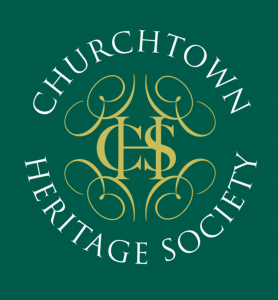By Jim McCarthy
The lands in the Parishes of Churchtown and Liscarroll were mostly held by a branch of the Norman Barrys who had castles at Liscarroll, Annagh and Walshestown. At the time of the abolition of Irish titles the Barrys had to forfeit their Churchtown estates and these were granted to a Nobleman named Percival. The head of this house of Percival was later created Earl of Egmont. The Earls of Egmont reigned supreme in the Barony of Orrery and Kilmore from around the year 1620 until 1823 when a strange turn came in the history of that family.
THE TIERNEYS AND THE EGMONT ESTATES
On the death of George III, on January 20,1820, The heir to the Throne, The Prince Regent lay seriously ill and his physicians entertained little hope of his recovery. On the evening of February 22 his condition worsened and his principle physician, Sir Henry Halford, Being away, the attendants grew alarmed.
At that time a Doctor Tierney chanced to arrive from Brighton and being called in took upon himself to bleed the King and took fifty ounces of blood from him. This releaved the King. Tierney passed the whole night by the bedside of his Majesty. Next morning the King was for the first time much better and in a short time was quite recovered. Dr Tierney had saved his life.
The story of this Dr Tierney and his brother Edward is not without interest. Their father John Tierney of Ballyscanlon, near Rathkeale, Co Limerick was a small farmer and also a weaver by trade. His eldest son Matthew was born in 1776 and his younger son Edward was born in 1780. The family circumstances were modest the boys only receiving what education they could pick up at the local hedge school.
Matthew was apprenticed to an apothecary in the town of Rathkeale with the ambition of setting up himself in that profession. When he was qualified, disappointment set in. Tradition says that having no money he was refused credit to buy the stock he required.
In 1797 at the age of twenty one years he left Rathkeale and swore he would never set foot in the place again. He made his way to London where he got a job as Chemists Assistant. While doing this he attended as a student of medicine at Guys Hospital. In 1799 Tierney entered as a student of Medicine at Glasgow and graduated as MD on April 22, 1802.
Following his success in restoring the health of Prince Regent Tierney quickly attained a good practice. He was appointed physician to the Prince of Wales household who took him much into his favour. In 1818 he was made a Baronet of the United Kingdom. After that Dr Tierney’s practice became immense and he settled in London.
EDWARD TIERNEY
While Sir Matthew Tierney was pushing his fortunes in England, the fortunes of his brother Edward at home were not neglected. He was apprenticed to a solicitor in Limerick and was admitted to the profession in 1806. He was a man of ability and intelligence with much strength of character.
In 1812 Edward Tierney married a Miss Jones whose sister was married to his brother Matthew, each bride having a fortune over £20,000. Through his brothers influence with the King, Edward Tierney was appointed Crown Solicitor for Ulster with a salary of £10,000 a year. As time went by Edward Tierney got well in with the court circles in London and became a close friend of John, 4th Earl of Egmont and his Countess.
Such was the friendship that grew up between the Egmonts and Edward Tierney that when Tierney’s son was born the Countess of Egmont and her son Henry, were his sponsors. This child was named Percival Tierney as this was the family name of the Earl. In1823 Lord Egmont appointed Edward Tierney agent over his Irish estates. Tierney proved himself a good agent making great improvements on the property. John, 4th Earl of Egmont died in 1835 and was succeeded by his son Henry who became 5th Earl and it was he who stood sponsor to Tierney’s son.




